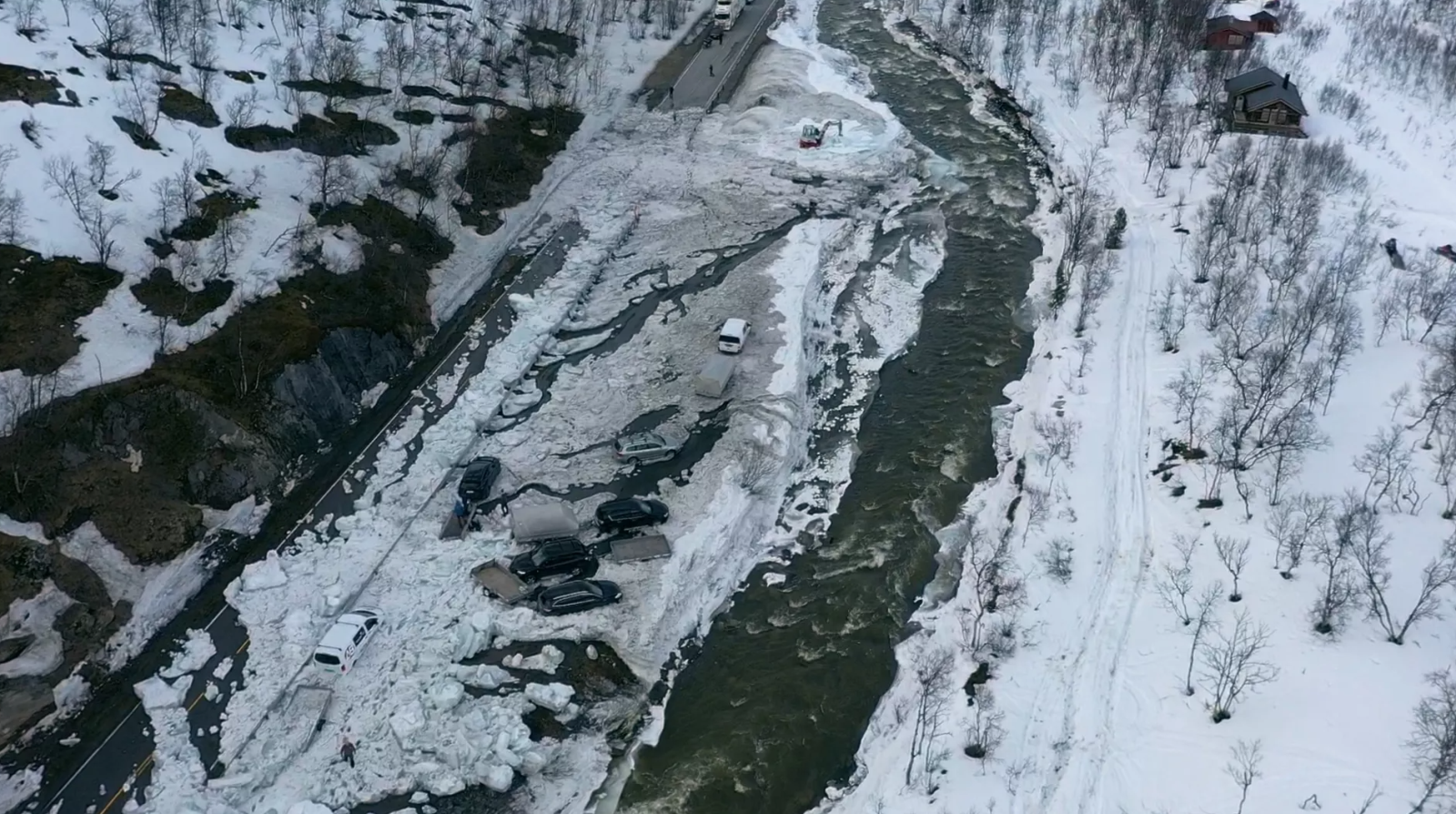
Unlike traditional avalanches, slush flows occur when snow becomes oversaturated with water, suddenly turning into a fast-moving, high-energy mass of slush, ice, and debris. These flows can travel long distances across flat terrain, swallowing roads, homes, and entire villages in minutes.
With climate change bringing warmer winters, heavier rainfall, and rapid snowmelt, experts warn that slush flows will become more frequent and severe, posing deadly risks in Norway, Scandinavia, and beyond.
Now, scientists at the University of Tromsø, working as part of the EU-funded IMPETUS project, are developing a digital mapping tool to predict when and where these disasters might strike—giving authorities vital time to act before tragedy unfolds.
A growing and unpredictable threat
While avalanches typically occur on steep mountain slopes, slush flows form on gentler inclines, where meltwater pools within deep snowpacks, eventually triggering sudden, catastrophic movement.
These events are particularly common in Norway's far northern region of Finnmark, where at least 55 documented slush flows have occurred in recent years. However, experts believe the true number is much higher, with many incidents going unreported due to a lack of monitoring systems.
"Compared to an avalanche, a slush flow carries much more mass because it's a mix of snow and water," says Trond Jøran Nilsen, an avalanche planning expert in Finnmark. "This makes it incredibly powerful and destructive, with the ability to travel far beyond where traditional avalanches stop."
Unlike regular avalanches, which typically dissipate on steep slopes, slush flows behave more like a mudslide or flood, accelerating downhill and spreading out over vast areas. In some cases, they have swept entire communities into rivers and lakes, cutting off transport routes and leaving residents stranded for days.
The impact is not just physical, but economic—in Finnmark, slush flows have repeatedly blocked roads, severing access to hospitals, schools, and businesses. In remote areas, detours can stretch up to nine hours, leaving towns isolated for weeks.
Why are slush flows becoming more frequent?
Scientists warn that climate change is making the conditions for slush flows more extreme, as warmer Arctic winters bring a dangerous mix of snow and rain.
Several environmental factors make Norway particularly vulnerable:
- 🌡️ Warmer, wetter winters – Rising temperatures cause more rain to fall on deep snowpacks, rapidly saturating the snow with water.
- 🌊 Thin soil layers – Unlike many parts of Europe, Norway's mountains have very little topsoil, meaning water cannot drain away and instead accumulates in snow layers.
- ☀️ Midnight sun effect – In Arctic regions, summer sunlight prevents snow from fully freezing overnight, leading to unstable conditions.
- 🌧️ Extreme storms – Climate change is bringing more sudden, intense rainfall, which triggers rapid snowmelt and increases slush flow risks.
"We expect slush flows to become much more common as climate change accelerates," says Dr. Christopher D'Ambiose, a leading researcher at the University of Tromsø. "We need to understand how they form and develop a reliable forecasting system before we see even more deadly disasters."
A new tool to predict disasters
To better predict slush flows, researchers are building a digital risk model that combines satellite imagery, weather data, and on-the-ground snow measurements to identify high-risk areas.
The system, which is still in development, will analyze three key factors:
📊 Weather patterns – Tracking rainfall, temperature changes, and snow conditions.
❄️ Snowpack saturation – Measuring how much water is trapped inside snow layers before they become unstable.
🗺️ Geographic data – Identifying which slopes, valleys, and roads are most vulnerable to slush flows.
"Right now, we don't have any effective way of predicting when and where slush flows will happen," explains D'Ambiose. "Our goal is to create a tool that allows authorities to monitor conditions in real time and take action before it's too late."
Real-world testing in the Arctic
To test the system, researchers have partnered with Finnmark's road authorities, who regularly battle slush flows along Norway's vast Arctic highway network.
🚧 Field tests – Scientists are conducting on-site snowpack measurements to assess how much water is present in the snow.
📡 Historical analysis – Using decades of past slush flow data to identify common patterns.
🔬 Simulation modeling – Running risk assessments on known high-risk areas to determine where future disasters might strike.
If successful, the model could revolutionize disaster prevention efforts in Norway—and potentially be adopted by other snow-covered regions in Europe, North America, and Asia.
"This is not just a Norwegian problem," says D'Ambiose. "Anywhere with deep seasonal snowpacks is at risk—whether that's the Alps, Canada, or the Himalayas."
The race against time
With winters warming and Arctic weather becoming more unpredictable, experts warn that communities must adapt quickly to prevent future tragedies.
The goal is to launch a public alert system, similar to avalanche warnings, allowing emergency services to close roads, evacuate residents, and reinforce vulnerable infrastructure before a slush flow occurs.
But time is running out.
"We are seeing more and more extreme weather events," says Nilsen. "If we don't act now, we risk facing even deadlier disasters in the years ahead."
For now, researchers are racing to gather data and refine their predictions, hoping that their work will save lives before the next deadly slush flow strikes.